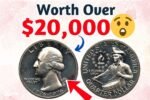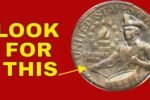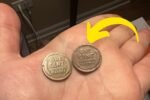
A Coin Born from America’s 200th Birthday
In 1976, to celebrate the 200th anniversary of American independence, the U.S. Mint launched a special series of coins: the Bicentennial Quarter, along with commemorative half dollars and dollars. Instead of the usual eagle on the reverse, the quarter featured a bold new design: a Revolutionary War drummer, a victory torch, and 13 stars representing the original colonies. Millions of these coins were minted—so many, in fact, that you can still find them in circulation today. Most were made from the usual copper-nickel blend, but a smaller batch—40% silver versions—was struck for collectors and sold in special proof and uncirculated sets.Wait… a $2.5 Billion Quarter? Is That Even Possible?
Let’s be honest: no Bicentennial Quarter has ever officially sold for $2.5 billion. That figure is more urban legend than auction reality. That said, the story behind this number may stem from a theoretical or speculative valuation—a perfect storm of rarity, error, pristine condition, and hype. It’s likely based on a one-of-a-kind error coin, possibly: Struck in gold or platinum (not standard issue) Featuring an extreme minting error Verified as unique, with historical or collector significance In flawless, mint-state or proof condition Could such a coin exist? In theory, yes. But has it sold for billions? No documented evidence says so. Still, in the world of rare collectibles, value is often determined by one simple rule: what someone is willing to payWhat Actually Makes a Bicentennial Quarter Valuable?
Now, here’s where it gets interesting. While most Bicentennial Quarters won’t fund your retirement, some are genuinely valuable—especially if they have these key traits:
40% Silver Composition
Originally sold in collector sets, these quarters:
-
Weigh slightly more than standard quarters
-
Have a shinier, more lustrous finish
-
Are worth 5–20+ depending on condition
Double Die Errors
Look for doubled text (like “LIBERTY” or “IN GOD WE TRUST”). These minting flaws can skyrocket a coin’s value to hundreds or even thousands of dollars.
Off-Center Strikes
If the design is misaligned or partially missing, that’s a mint error—highly collectible and often worth 50to250+.
Missing Clad Layer
A quarter with a reddish tint (from exposed copper) or an unusually dull, thin appearance may be missing its outer nickel layer—another valuable flaw.
How to Spot a Rare Bicentennial Quarter
Ready to check your coins? Follow this quick guide:
-
Check the Date – Must read “1776–1976” on the front.
-
Flip It Over – Look for the drummer boy design.
-
Find the Mint Mark – An “S” means it was struck in San Francisco and could be silver.
-
Weigh It – Silver quarters weigh ~5.75 grams (standard: ~5.67 grams).
-
Use a Magnet – A silver or error coin won’t stick.
-
Inspect for Errors – Use a magnifying glass to spot doubling or misalignments.
Are Bicentennial Quarters Still in Circulation?
Yes! In fact, they’re one of the few commemorative coins still commonly found in your pocket change. And while most are worth just face value, the possibility of finding a rare or silver version makes checking your change a fun—and potentially profitable—habit.People have found valuable coins:
- In change jars
- In coin rolls from banks
- At garage sales or flea markets
- Even in grandma’s old coin collection
- So, Should You Start Checking Your Quarters?
- Absolutely.




